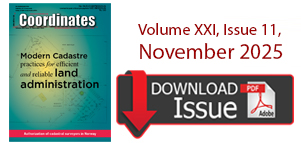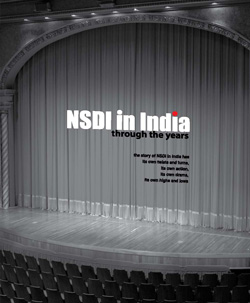Articles in the Articles Category

GNSS (Global Navigation Satellite Systems) is a common acronym encompassing all existing and planned satellite-based navigation systems. So far, the US-built GPS dominates the scene completely, but the Russian GLONASS is approaching around-the-clock global operational status, and other systems are being developed (the European Galileo, the Chinese Compass/Beidou and the Indian IRNSS). There are also augmentation…
A group of Japanese professionals and lawyers have asked Google to
stop providing the detailed street level images of Japanese cities.
Their concern is that it violates privacy rights.
The ‘owners of the technology’ tend to demonstrate the extent
to which the technology can go and what …
February 2009
3rd GEOSS Asia-Pacific Symposium
4-6 February Kyoto,Japan
geoss-ap3@restec.or.jp
http://www.prime-intl.co.jp/geoss/
Galileo Open SErvice
12 February, …
December 2008
GEOExpo 2008 China
2 – 4 December 2008,
Shanghai, China
sales@chinageo-expo.com
http://www.ChinaGeo-Expo.com
January 2009
ESRI Asia Pacific User Conference
20-21 January 2009
Singapore city,Singapore
http://www.esri.com/events/apuc/index.html
Intergeo East
27-29 January 2009
Istanbul,Turkey
http://www.intergeo-east.com
February 2009
Trimble Dimension 2009
123-25, February 2009
The Mirage, Las Vegas, USA
http://www.trimbleevents.com/dimensions09
March 2009
Munich Satellite Navigation Summit Conference
March 3-5,2009
Munich, Germany
http://www.munich-satellite-navigation-summit.org
April 2009
GEO Siberia 2009
21-23 April
Novosibirsk, Russian
nenash@sibfair.ru
http://www.geosiberia.sibfair.ru
May 2009
International Conference on …
Economic slowdown, meltdown, recession…
Cost cut, retrenchments, …
Fears, uncertainty, survival issue…
Is geomatics industry immune?
No, if we talk about banking, retail or auto segments…
To an extent yes, if we think about government-driven infrastructure projects.
Defence, internal security, …
Appears, we are heading towards diffi cult times.
It is also a time to correct fundamentals.
Focus on forgotten sectors like agriculture.
…

Current global navigation satellite systems (GNSSs) [1] are based on signals lying within the L-band of the radio-navigation satellite service (RNSS) spectrum. Since the need for more systems and signals is emerging, new alternative frequency resources are needed. In particular, the C-band frequency portion is envisioned as an option for future GNSSs…

Dr R Siva Kumar CEO National Spatial Data Infrastructure on status and directions of NSDI in India
We are not hearing much about NSDI? What is the status of NSDI?
The vision behind NSDI is to make data available and accessible. Keeping this objective in mind policies and framework are formulated. Various aspects of …













 (5.00 out of 5)
(5.00 out of 5)